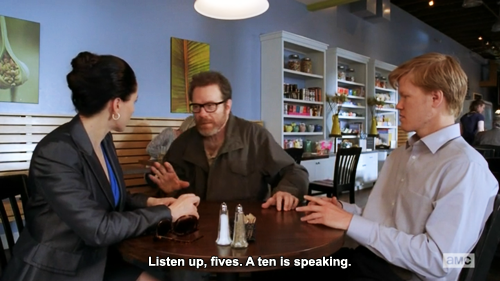by Vincenzo Marino – translated by Roberta Aiello
Investigative objectivity and future journalism: two models

Since two Sundays ago, the conversation between Glenn Greenwald and Bill Keller, former editor of The New York Times, has monopolized the American and international media debate. The themes confronted are the future of journalism and the role of activism and objectivity in its production, which are not new arguments. In the last few months, however, as pointed out by Hamish McKenzie of PandoDaily, the two issues have been brought back in an almost inescapable and natural way inside a completely new general context (regarding the profession) where the news of the NSA affair (and how the sources were processed and spread) are likely to influence the work of journalism and its definitions. Keller wonders whether the style of the journalist, blogger and activist Greenwald, a work of reportage animated by ideological motivations, is to be considered legitimate and a possible future model, or if a more classical one, adhering to the style of The New York Times and the precepts of neutrality without ideological prejudices and opinions, is still to be preferred. Greenwald replies that [tweetable]too often the presumed impartiality ended in influencing the work of the reporter[/tweetable] (one of the examples is the number of times the word “torture” has been used to describe waterboarding, a practice which is defined differently in each country where it is practiced). For Greenwald a healthy and honest declaration of one’s own ‘visions’ regarding the matter on which the work is about, accompanied by a clear report of the facts, is a more honest way to address readers to help them participate in the precise vision in which the events are being told, analyzed and commentated.
[tweetable]«All journalism is a form of activism»[/tweetable], Greenwald points out. It is better to honestly disclose subjective values, without fomenting the myth of a distinction between those who write without holding opinions and others who risk being affected, even from the institutional point of view (the pressure of governments, the defense of the nation). For Keller, this distinction exists and it is the basis of an objective account of the facts. It represents the ability to suspend one’s own judgment, and let the news unveil itself without any deformation, working with a cohesive newsroom which knows well how and when to publish news that might be deemed a «threat to national security» (as in the case of the choice of the NYT in 2005, when it decided to suspend the publication of investigations into the practices of NSA spying). The long exchange generated a broad debate that found the meeting point in the opinion of commentators like Andrew Sullivan, who embraces both theses on The Dish («Why Not Both?»). [tweetable]Trying to appear objective «is, in other words, not actually being objective or impartial»[/tweetable]. Hiding one’s own biases, and trying to appear objective, can mean «the opposite of honest». On the other hand, Sullivan continues, Greenwald is still expected to demonstrate a closer ‘institutional’ production, with a traditional newspaper and a more classical collaboration (with The Guardian he has so far worked in an ‘anomalous’ way, both as a blogger and as a reporter). It is an approach – he concludes – of which there is a need, even as an alternative to the idea of journalism in the NYT style embodied by Keller to mix the “old testament” and the “new testament” of a journalism for which “the Messiah has not yet arrived” comments Jay Rosen.
How the collaboration between The Guardian, NYT and ProPublica works

James Ball from The Guardian and Jeff Larson from ProPublica shared with the audience at the Mozilla Festival in London some of the behind-the-scene stories on the collaboration between the two newsrooms and The New York Times on the NSA affair – as reported by Journalism.co.uk. A union of efforts that has eased pressure on the British newspaper (which cannot benefit, of course, from the protections of the First Amendment of the United States Constitution) and which ensured a more accurate and speedy investigation of the data. It was a story defined as “technically challenging”, which required a full-time effort and a large number of employees. Unlike other ‘stories’, in which the road between the original source and final scoop was not as impervious as in the Wikileaks case (which, according to Ball and Larson, was able to reach the front pages of newspapers almost ‘automatically’), a job of decoding was needed, that involved several people and a necessary collaboration. The work between the three editors “went pretty smoothly”, said Larson. There were meetings in which they worked together on information which became articles written by each team – different from one another, each with its respective style and on the basis of the findings. According to Ball the support of specific newspapers, both financially and technically equipped, was fundamental: [tweetable]«Without well-resourced newsrooms you could not do it»[/tweetable].
Is writing for free «slavery»?

Last week, in the worldwide journalistic debate, the issue of working for free on the Internet came back, prompted by an article by Tim Kreider on the Sunday Review of The New York Times. The argument returns cyclically producing opinions and debates, and it is the sign – Mathew Ingram points out – of how the economic and financial issues are destined to become increasingly important in this period of rapid ‘upheaval’ in the industry – both in terms of the point of view of the industry and that of the individual. Even more if one is facing a revolution of a productive nature: the possibility for everyone, everywhere, to produce content at no cost in an environment in which – according to Kreider – it is practically impossible to make a profit. Internet, like the atomic bomb in war, made everything else obsolete, it is a real weapon aimed against creativity. No one considers a haircut or a can of soda at no cost, he says, just as [tweetable]no one should expect that the intellectual effort of anyone should be rewarded with nothing but ‘exposure'[/tweetable] («Artist dies of exposure»). Kreider speaks of «slavery», a definition that Ingram on PaidContent refuses, reminding us how the marketing scenario and production processes of editorial content have changed significantly – especially in economic terms.
Derek Thompson in The Atlantic tries to evaluate the two opposing theses. No one should work for free, because writing is an activity that should be compensated and not a luxury. However, pretending that no one should agree to work for free is no longer possible, because this possibility has given the chance to break down barriers and categories and bring to light ideas, contents and signatures that previously had not had the opportunity to be read – the author calls it «Intellectual surplus», an exposure for a long-term benefit, according to Dan Lewis in Medium. For Lewis, it is quite likely that an exposure in return for free labor is not ‘real’ exposure, and can not be turned into something really usefull. For those who write for free, it is no longer a matter of enriching a portfolio of new articles, but to “convert” followers – or at least part of them – into audience. It is an almost necessary sacrifice, especially for young people, according to Daniel D’Addario in Salon, who does not forget to point out that writing for newspapers that are not school newspapers – for which one really writes for free – means to work “for negative dollars “, since a well made product still provides a cost in terms of processing.
From The New York Times to Mashable

Other important news from last week was the passage of Jim Roberts, the Assistant Managing Editor of The New York Times – as well as a former leading figure of Reuters – to Mashable, the website for which he will become executive editor and chief content officer. His stated goal is to expand the ‘journalistic’ base of the newsroom, currently focused on the aggregation of content produced by others and on technological content, through the use of the ‘social web-skills’ of the website. Contacted by PaidContent, Roberts admitted having great confidence in the projects of Pete Cashmore, founder and CEO of Mashable, and in the ambitions of the newsroom, a project of 20 million unique visitors monthly which, according to CEO Mike Kriak, would currently be in positive territory from the economic point of view. The arrival of a protagonist of ‘classic’ journalism – although aware of the digital revolution – is part of the same trail of ‘transfers’ such as Ben Smith from Politico to BuzzFeed and Tim O’Brien from The New York Times to The Huffington Post. It is a growing sequence of journalists who came from stable newsrooms and have decided to give their own ‘old media’ contribution to new digital projects born without purely journalistic pretensions and different structural inheritances.


